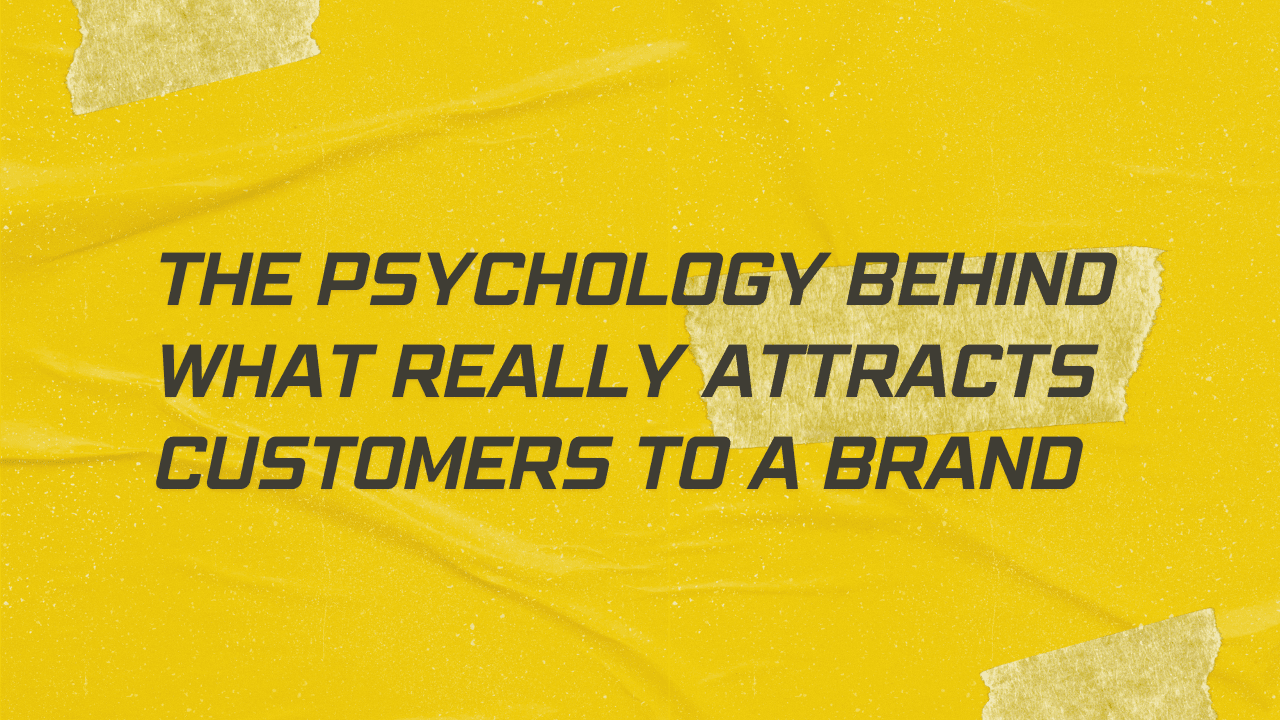The Psychology Behind What Really Attracts Customers to a Brand

Introduction
In an age where customers are bombarded with ads, offers, and endless product choices, standing out as a brand isn’t just about having the best product. It’s about creating the right feeling. Because whether they realise it or not, people buy with their emotions first — and justify it later with logic.
Understanding the psychology behind what attracts customers to a brand can be the difference between being ignored and becoming irresistible. In this blog, we’ll unpack the key psychological factors that influence brand attraction and how you can use them to win hearts and wallets.
Emotional Connection: People Buy Feelings, Not Products
Why it works:
Customers aren’t just buying what you sell — they’re buying how it makes them feel. A luxury watch isn't just a timepiece; it’s status. A fitness app isn’t just about workouts; it’s confidence, energy, and self-worth.
How to use it:
- Focus on emotional benefits in your messaging.
- Use visuals and language that trigger desired emotions (joy, security, empowerment, belonging).
- Create customer stories or testimonials that highlight emotional transformations.
The Power of Social Proof
Why it works:
Humans are wired to follow the crowd. When people see others trusting or endorsing a brand, it subconsciously signals safety and reliability.
How to use it:
- Highlight reviews, testimonials, and case studies.
- Showcase user-generated content.
- Display follower counts, subscriber numbers, or customer milestones.
The Authority Effect
Why it works:
We instinctively trust experts, influencers, or established names. When your brand is associated with authority figures or displays expertise, customers are more likely to believe in its credibility.
How to use it:
- Partner with trusted industry influencers or thought leaders.
- Publish research-backed insights or educational content.
- Feature awards, recognitions, or media mentions.
Consistency Builds Trust
Why it works:
The brain craves predictability. Brands that deliver a consistent experience across touchpoints build familiarity — and familiarity breeds trust.
How to use it:
- Maintain consistent brand voice, visuals, and values.
- Deliver consistent product/service quality.
- Be reliably active and responsive on social and support channels.
The Scarcity Principle
Why it works:
People value things more when they perceive them as limited. Scarcity taps into fear of missing out (FOMO) and increases desire.
How to use it:
- Run limited-time offers or exclusive product drops.
- Use language like “Only 5 left” or “Offer ends soon”.
- Create waitlists or early-access launches.
Storytelling Over Selling
Why it works:
Stories activate more parts of the brain than facts and figures. They help people emotionally engage with your brand and remember it.
How to use it:
- Share your brand’s origin story or customer success stories.
- Use narrative-driven content in marketing campaigns.
- Position customers as heroes in your brand’s story.
Personalisation Makes People Feel Seen
Why it works:
We’re naturally drawn to brands that recognise us as individuals, not just customers. Personalisation makes customers feel valued, which strengthens emotional bonds.
How to use it:
- Personalise emails, offers, and product recommendations.
- Use customer names and preferences in communications.
- Tailor experiences based on behaviour and purchase history.
Conclusion
Attracting customers isn’t just about clever ads or competitive pricing. It’s about tapping into what really moves people: their emotions, desires, fears, and instincts.
By leveraging these psychological principles — from emotional connection to social proof and storytelling — brands can build deeper, more meaningful relationships that go beyond transactions and turn customers into loyal advocates.
In the end, the brands that win aren’t just selling products. They’re selling feelings, trust, and belonging.